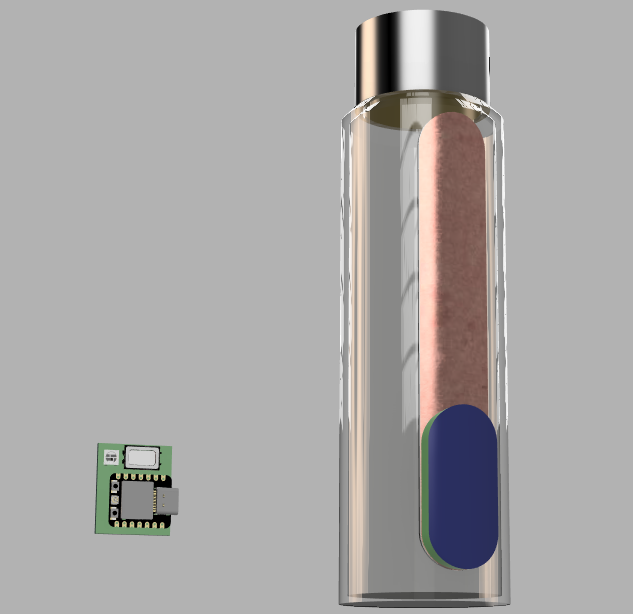Applications and Implications & Project Development
The assignment for this week:
- Propose a final project masterpiece that integrates the range of units covered, answering:
- Who's done what beforehand?
- What will you design?
- What materials and components will be used?
- Where will come from?
- How much will they cost?
- What parts and systems will be made?
- What processes will be used?
- What questions need to be answered?
- How will it be evaluated?
- Your project should incorporate 2D and 3D design,
- Where possible, you should make rather than buy the parts of your project
- Projects can be separate or joint, but need to show individual mastery of the skills, and be independently operable
- What will it do?
additive and subtractive fabrication processes,
electronics design and production,
embedded microcontroller interfacing and programming,
system integration and packaging
- Design: Draw the schematic and design the PCB in KiCad.
- Manufacture: Mill the PCB board and solder the components.
- Program: Test the board and program it to blink the LED and sound alarm in time intervals.
- Design the housing unit in Fusion360 such that the PCB fits well.
- 3D print the housing unit
- Design the User Interface in Kodular.
- How can I remember to drink water regularly?
- How can I quickly locate my water bottle when I need it?
- How can technology be integrated seamlessly into daily hydration habits?
- How can a hydration reminder be personalized and customized for individual users?
- How can we encourage children and adults alike to drink more water?
- The project can be evaluated by ensuring that all technical aspects such as reminder alerts and tracking capabilities, function correctly.
- Testing the integration of reminder and location features for seamless operation.
- Since the components required for the project should be small and compact. I went to an mobile service centre to look for components. I purchased a mobile speaker and battery.
- Also, I have tested the capacitive sensors, battery and mobile speaker.
- The copper strips placed on the bottle act as the conductive plates of a capacitor.
- As the water level changes, the amount of water (dielectric) between the copper strips changes, affecting the capacitance. When the water level rises, more water (with a high dielectric constant) is between the strips, increasing the capacitance. When the water level falls, less water is present, decreasing the capacitance.
What will it do?
The Aqua Buddy is a smart hydration reminder designed to fit around a water bottle. It features motion sensors to detect when the bottle is moved and capacitive sensors to monitor the water level. If the bottle remains stationary for too long, indicating inactivity, it triggers reminders via light and audible alarms. Users can customize reminder settings and receive notifications through a connected mobile app via Bluetooth. The durable, comfortable silicon band integrates a Neopixel strip for visual alerts. The device helps ensure consistent hydration by reminding users to drink water at regular intervals based on their personalized settings.The initial design concept was to have it like a band like this:
 "
"The idea was to use an accelerometer and detect any tilt in the bottle as an activity and to trigger reminders when there is inactivity. But my instructors, Jogin and Saheen suggested to test step response on the bottle with two copper strips. It worked! So, I changed my initial design concept to this:
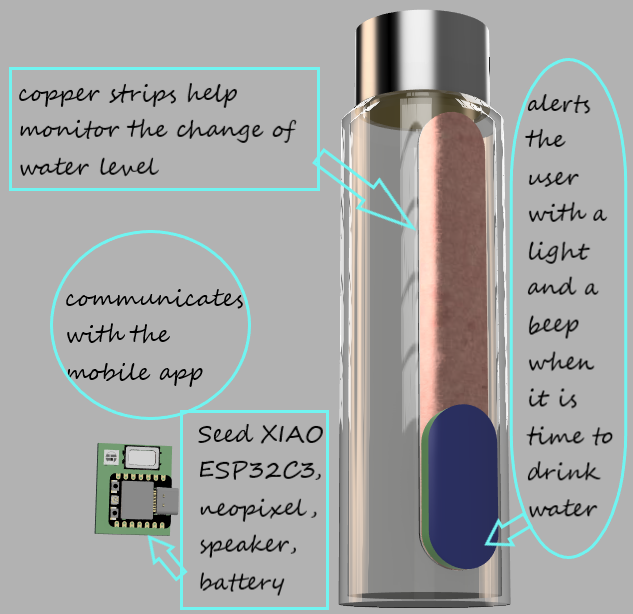 "
"Who's done what beforehand?
Smart bottles are available in amazon. In the ones available, the LED and alarm goes off at certain times. Some do not have a facility to monitor the water intake. However, the Aqua Buddy can be attached to anybody's favourite bottle.
.png) "
".png) "
"Fabacademy project by Doaa.Alshureih The smart hydration water bottle where he designed a refillable water bottle, made of bambo and a food-safe plastic. The water bottle interacts with the user by changing noepixl LED color based on five different water levels.
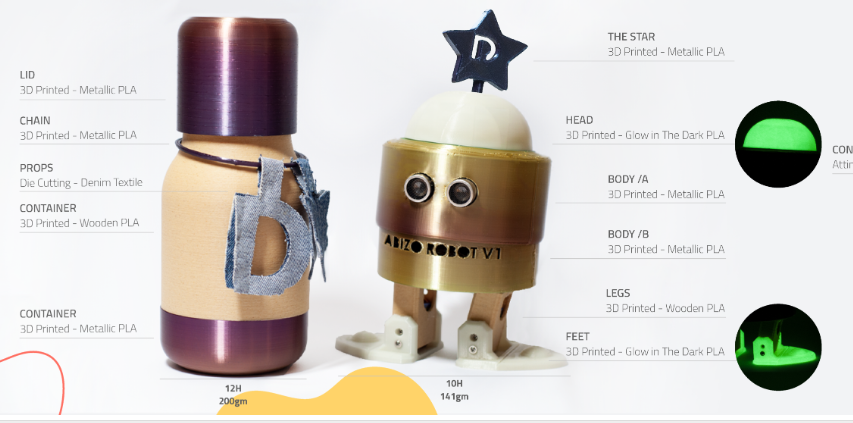 "
"Scope of this project
With light and sound alerts, the band reminds you to drink water and locates your bottle effortlessly. Affordable at under $10 when components are bought in bulk, this customizable band can be cut and stuck on the user's favourite bottle. Paired with an app that detects the water level you've consumed, staying refreshed has never been simpler.What will you design?
I plan to design this:
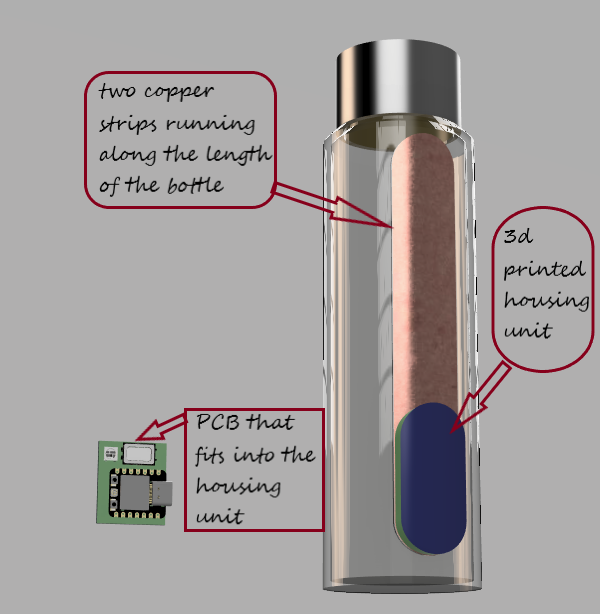 "
"What materials and components will be used? Where will it come from? How much will they cost?
Almost all components are available in our Fablab, except for the tiny battery and mobile phone speaker.Since I wanted small components went to a market place for mobile repair and servicing. And a bit of hunting got the smallest speaker and battery available there. This is just a small portion of the building and it is completely dedicated only to mobile servicing and accessories.
 "
"| S.No. | COMPONENT | SOURCE | QUANTITY | COST |
|---|---|---|---|---|
| 1 | Microcontroller-Xiao ESP32C3 | Fablab | 1 | 699 |
| 2 | LED RGB Clear | Fablab | 1 | 40 |
| 3 | Mobile Speaker | Local shop | 1 | 10 |
| 4 | Copper Tape | Fablab | 18cm x 3cm strip | - |
| 5 | Resistors | Fablab | 5 | 5 |
| 7 | Battery-LiPo LP251 320 40mAh | Local shop | 1 | 120 |
| Total(INR) | 874 | |||
| Total(USD) | 10.52 |

What parts and systems will be made? What processes will be used?
Electronic Circuit and PCB Production:
3D Printing for Housing:
Interface:
What questions need to be answered?
With my Aqua Buddy, the main questions to be answered,
How will it be evaluated?
Project Development
What tasks have been completed?
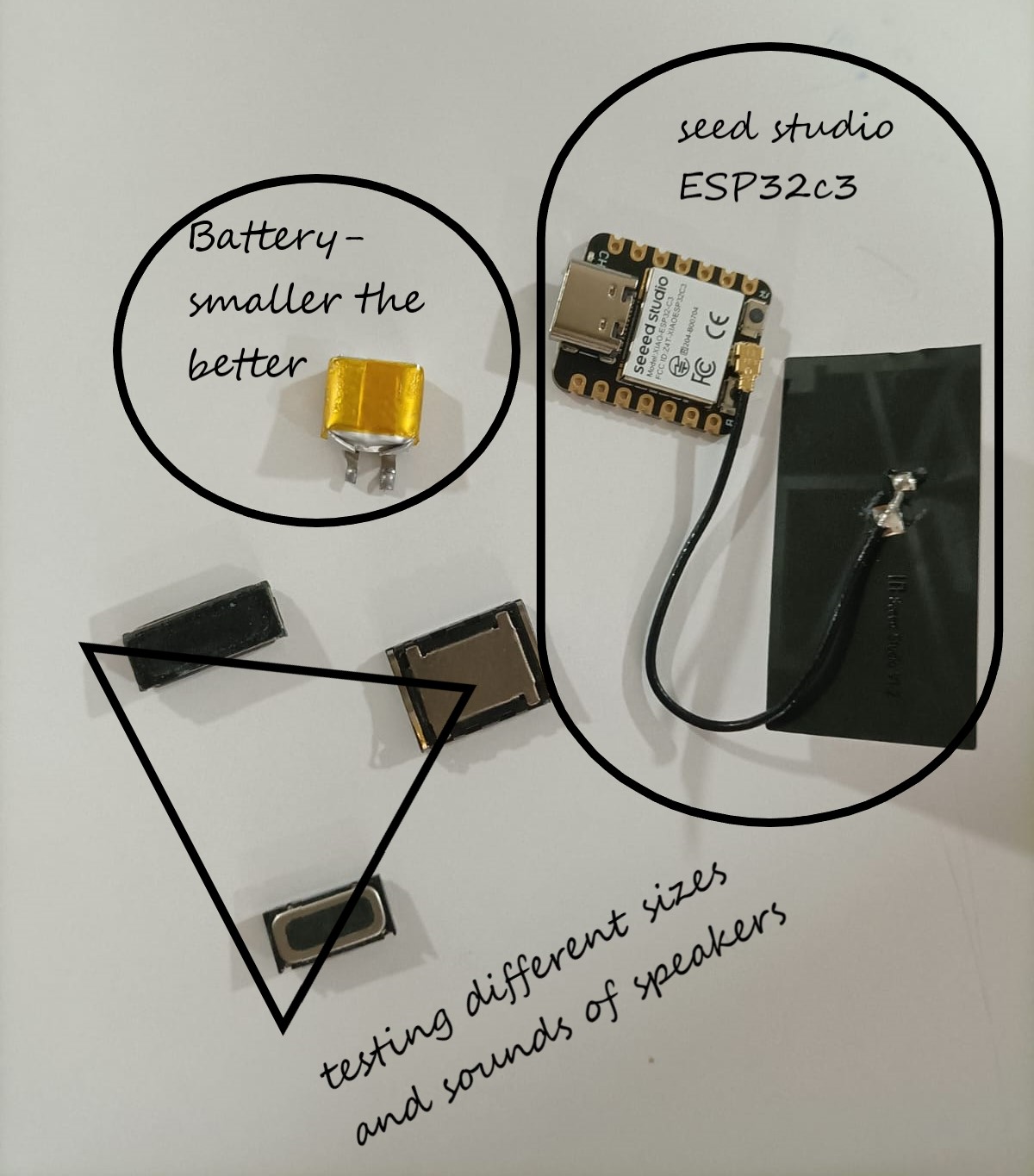
What's working? What's not?
So far, the capacitive sensors are working. The battery and mobile speaker are in good working condition too.
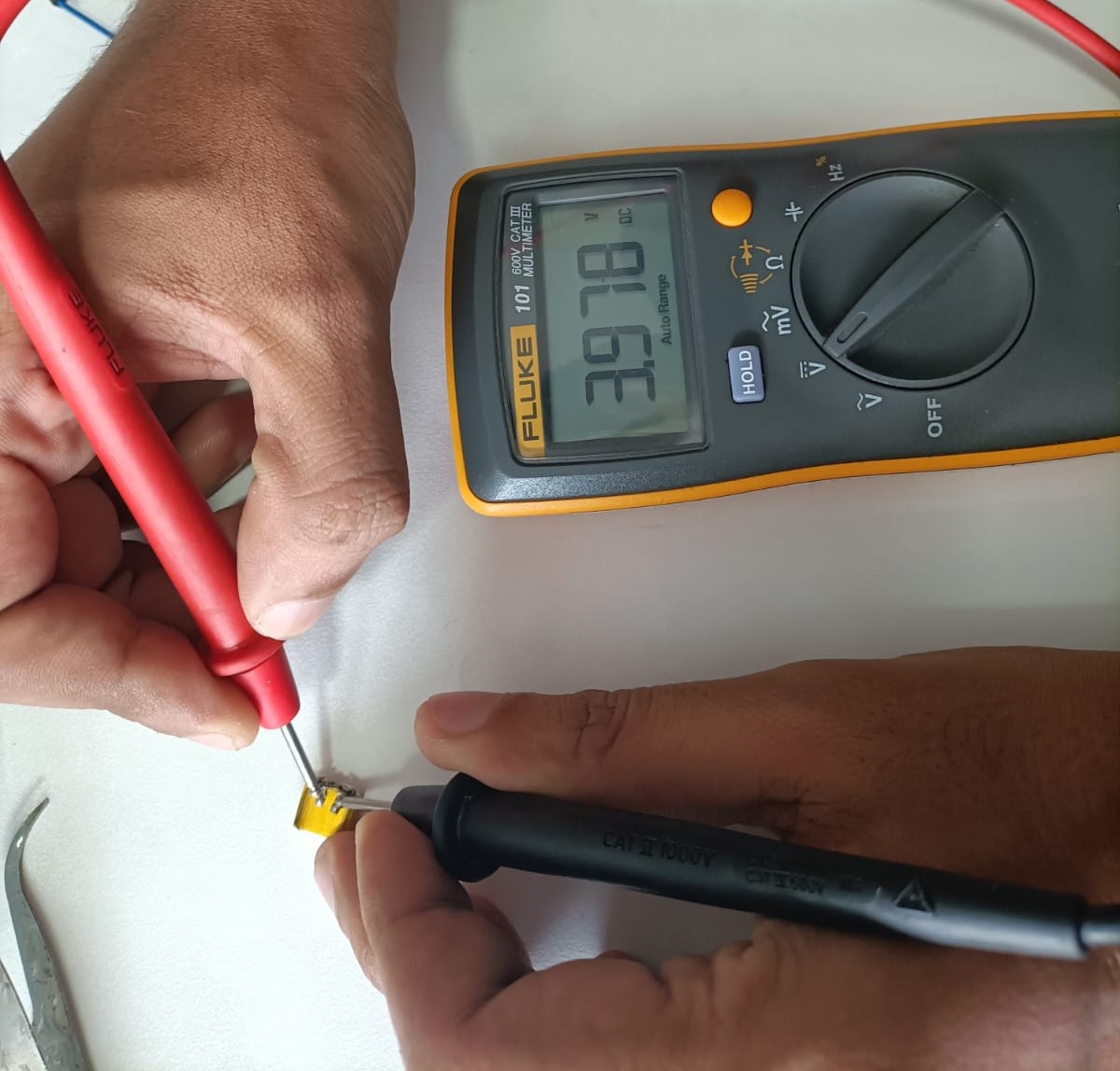
I haven't yet checked the step response with ESP32, though.
what questions need to be resolved?
In Neil's notes, he has given two circuits for RP2040 and t1624. I tested using Attiny1614 using RP2040's circuit. I will have to find out which works for ESP32. I have given options for both in my board.
Also, another question is how to establish the communication between the board and the app to send alerts and timely notification.
.png)
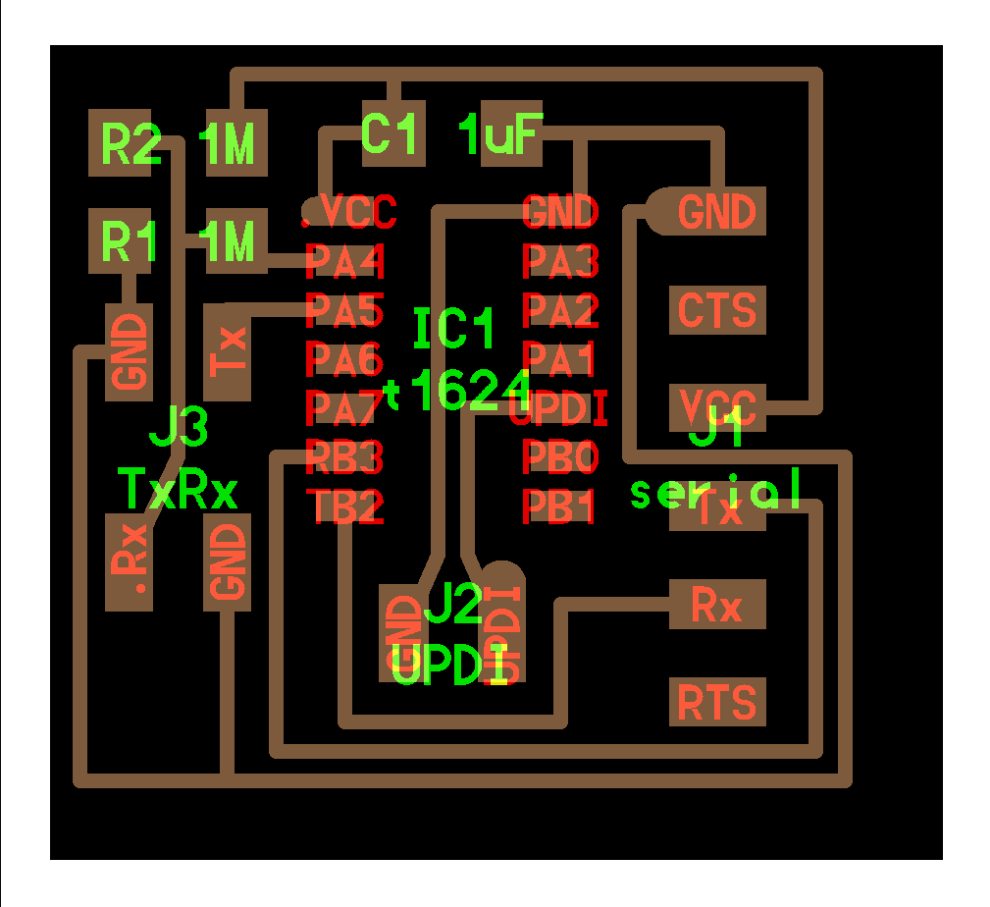
what will happen when?
This is my schedule as of now.
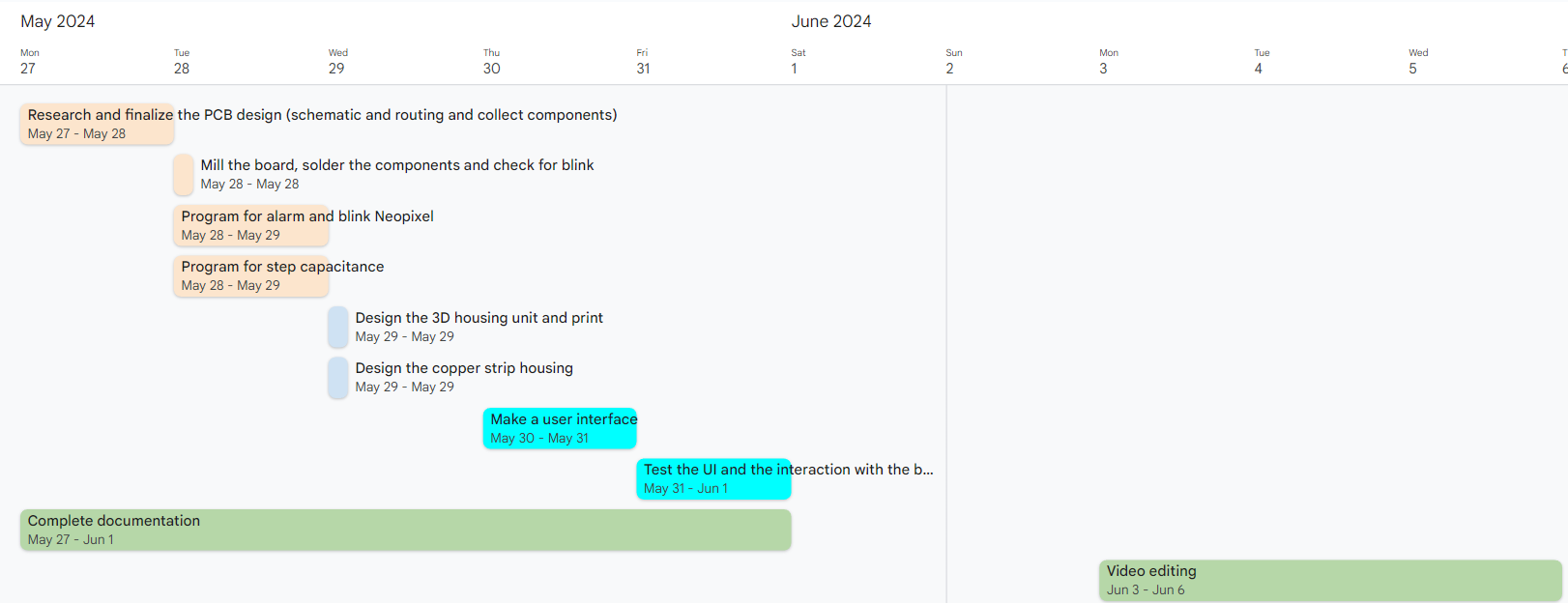
what have you learned?
I am excited that the step response can be successfully used in my project.The theory behind is that water has a high dielectric constant (about 80), compared to air (about 1). This means the presence of water between the plates significantly increases the capacitance.
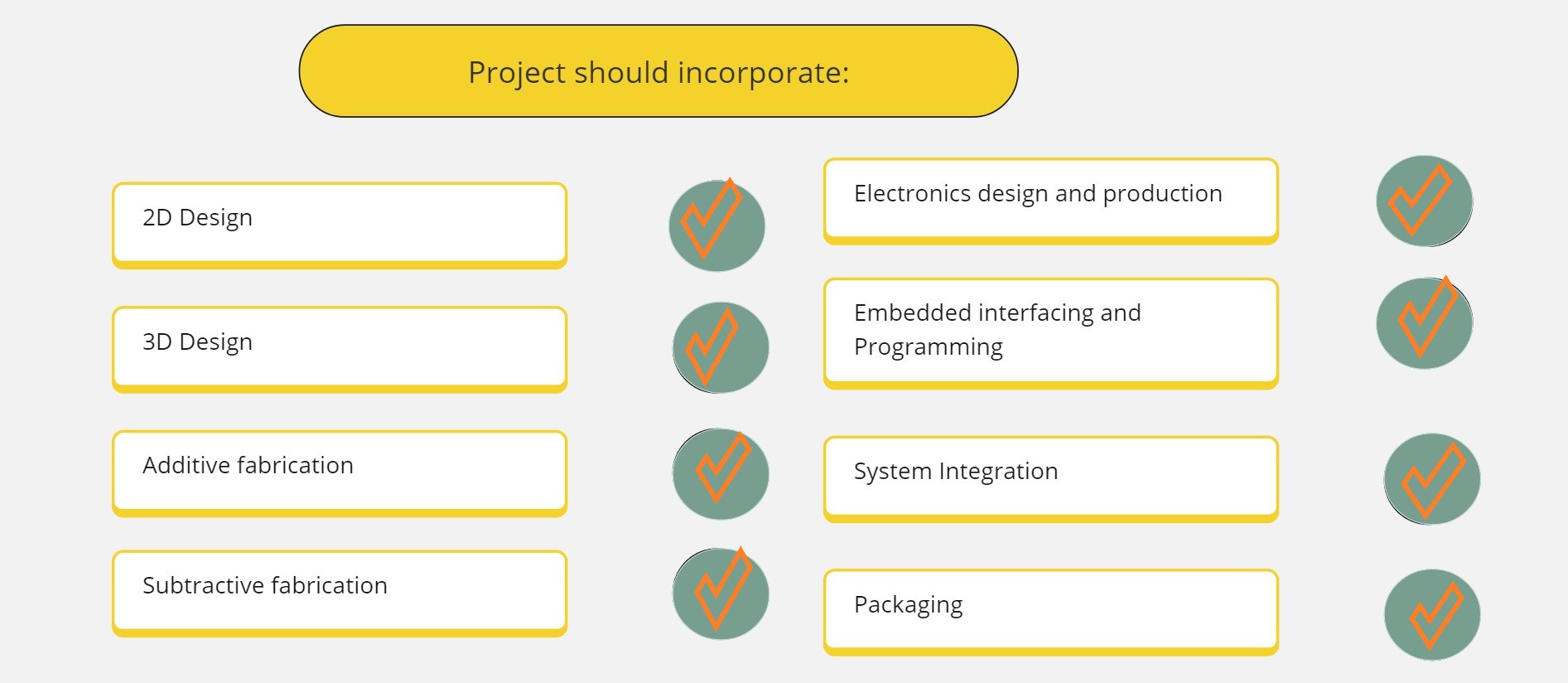 "
"